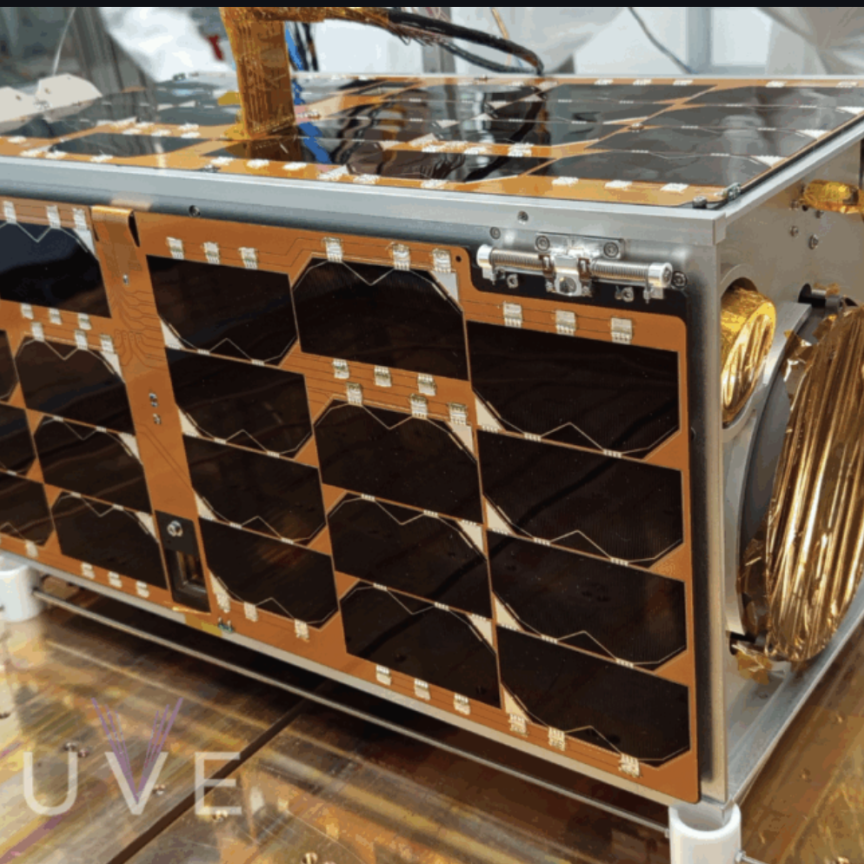Counterfeit medication is a big problem, even in the Western world where there is greater testing and regulation. As an authentication tool, spectroscopy can qualify the chemical composition of a drug, and also do this through opaque packaging like blister packs. In the laboratory, this makes it an ideal analytical technique, but pharmaceutical companies, and also testing officials at distribution centres, want smaller, less expensive, and more portable equipment that they can take into the field, and which spectrometer suppliers are starting to deliver.
Typically, Raman spectroscopy is the method of choice for pharmaceutical testing. ‘Raman is good for rapid identification,’ commented Henry Langston, product manager at Ocean Optics. He said that Raman spectroscopy offers a rapid, convenient method for positive identification of pharmaceutical products and their raw materials, and that this could be on the manufacturing floor, in inventory, and at the shipping dock.
Raman is non-contact and can also penetrate glass and plastic packaging. ‘You need a technique that does not rely on visible light,’ Langston added, in order to get a reading from medicine in blister packs or green bottles.
Raman spectroscopy examines materials, not through direct absorption, but by scattering of high intensity light. The scattered radiation will be specific to the vibrational and rotational states of the sample, and therefore give a specific spectrum, the chemical fingerprint of the molecule. Ocean Optics has benchtop and portable Raman equipment, including its IDRaman mini handheld Raman spectrometer.
More exact analysis of ingredients might involve NIR spectroscopy with chemo metric models – so taking thousands of spectra to build a model, which the sample can then be compared with – or Raman techniques, like Raster Orbital Scanning (ROS). ROS is a sampling technique that moves the laser in a daisy-like pattern over the sample surface to probe a larger and more representative area. This is advantageous for measuring complex mixtures like pharmaceuticals – Ocean Optics has demonstrated its benchtop IDRaman reader, which has ROS technology, to test Alka-Seltzer, an over-the-counter antacid with multiple active ingredients.
Then there are also authentication methods that use a fluorescent tag or other specific emissions incorporated into the drug. Certain tags have been approved by the FDA as consumable, so they can be integrated into the medicine and measured with a spectrometer. A combination of fluorescent tags can not only identify a particular product, but also which batch it is and other information.
Most fluorescent tags are integrated into the packaging, according to Langston, but there is also an interest to incorporate them directly in the pill.
Drug detection on the go
The need for small, portable instruments for use in the field would help in the detection and prevention of counterfeit medicines, according to Langston: ‘Most fraud happens in the distribution chain a long way from the factory and away from the labs, so it’s a lot easier to have an instrument in the field and actually doing random testing.’
‘You can test a lot more samples a lot quicker, and you can also actually do it closer to where the customer is taking that medicine,’ he added.
Another advantage of having smaller instruments when checking authenticity, Langston said, is that testing can be carried out more discreetly. ‘Often, the distributor that you might be inspecting, or the vendor, is not going to want to be told that the goods that they’re selling are counterfeit, or found out if they are aware of the crime,’ he said. ‘So, having something that is small and portable also makes it easier to [test] discreetly.’
Portable, low cost spectrometers could also aid in the detection of recreational drugs. A pressing challenge facing the police and import inspection facilities is the rise of new types of narcotics, or ‘designer drugs’, which are being created to cheat test systems used by authorities, explained Jason Pierce of Stellarnet: ‘[The drugs are sent] through typical mail delivery routes, and they are basically derivatives of MDMA – the manufacturers can just change the molecule slightly and make a completely new drug.’
In the United States, usually, police use colorimetric assays or sniffer dogs to detect illegal drugs, but these aren’t effective for identifying their derivatives, Pierce added. ‘A Raman spectrometer with a database containing these new types of synthetic derivatives could easily determine whether an imported drug is in fact... a type of designer drug.’
‘I’ve worked with Professors of forensic chemistry, and even some crime labs, and they want each of these different crime units to have a Raman spectroscopy system, even in every police car.’
Pierce said that this scenario is quite a way off, as it would take time to create a database of synthesised drug products. The Raman systems would also need to be miniaturised and the price point dropped to a few thousand dollars for Raman systems to ‘get into every officer’s hand’.
Start-up tech
A project to develop a ‘marijuana breathalyser’ for police officers to test suspected impaired drivers by the roadside was awarded second place in the SPIE Startup Challenge, which took place during Photonics West in February in San Francisco. The device, which is being created by start-up company Diagnostic AnSERS, uses surface-enhanced Raman spectroscopy (SERS) to detect the amount of marijuana in a person’s blood.
SERS requires two components: a Raman spectrometer and a SERS substrate. Diagnostic AnSERS has developed a patent-pending inkjet process that reduces the cost of producing these substrates without sacrificing sensitivity. During the competition at Photonics West, the company’s co-founder Sean Vigile said that it was working with spectrometer companies to bring down the cost of the spectroscopy part of the instrument so that it can be used as a roadside test.
Another start-up company is developing a SWIR imaging spectrometer for checking whether pills such as Viagra are fake or not. Stratio, which was founded by Stanford engineers, has received $750,000 worth of funding from the US’ National Science Foundation, and plans to start selling its device later this year for $199.
San Jose-based Stratio’s product, called LinkSquare, is connected to a smartphone via USB. It shines light from the visible to the near-infrared onto a pill, and the way in which the light reflects back is captured by an image sensor and illustrated in two graphs on the smartphone’s display. In a demo of the device described in MIT Technology Review, the process is repeated with two other similar-looking pills, also purporting to be Viagra (one is a generic pill, the other a fake), and their graphs look noticeably different to the branded pill’s spectral signature. So far, Viagra is the only drug that the instrument is able to work with but the company is researching other medicines.
While both of the systems described clearly show promise, both companies are still working on improvements on either the instrumentation or performance. Furthermore, both systems have been designed to answer specific questions, requiring the analysis of only a very limited number of substances.
A more universal-type device that could be used by consumers or police officers to test a broad range of medicines or drug derivatives is something that still requires more of a research-grade spectroscopy tool. ‘For analysing medicines, you need the high performance and resolution,’ said Dr Thomas Rasmussen, vice president of business development, sales, and marketing at Ibsen Photonics. ‘You cannot compromise on the quality, because you need to get a correct response with a high level of certainty.’
But spectroscopy companies are constantly miniaturising their technology and working towards bringing such systems to market. Last year, Stellarnet launched a series of near-infrared (NIR) spectroscopy, Raman, and laser-induced breakdown spectroscopy (LIBS) systems that have been incorporated into briefcase-style cases for portability. The instruments can be sold directly to crime units, or ports of entry for checking imported substances, for example.
The StellarCase-NIR Analyser can be used for quantifying unknown substances, so determining the potency of, or active ingredients in, a particular drug. The StellarCase-Raman would be more suitable for carrying out rapid identification of a substance, so is more applicable for a crime unit or inspection facility for imported goods, Pierce said.
Although these systems have taken a step towards being portable, the price and size are still not at a point where they can be put in every police car or exist as handheld instruments. ‘The case analysers are research-grade instruments that have, for example, thermoelectric cooling, a high power laser with adjustable power output – they have the full function of our modular spectroscopy systems,’ Pierce noted. ‘So, we have not yet sacrificed performance in order to make it portable. We have taken our research-grade instruments and mounted them in portable cases.’
However, once the applications have been narrowed down – for example, by determining the most common synthetic drugs in circulation – smaller, more portable instruments could be developed. The high-performance and accuracy of Raman spectroscopy could still be achieved, but designed for more specific purposes. ‘As we... learn what the market wants, we will make less sophisticated instruments that are cheaper and do specific jobs. But we will need to follow the market and provide the system for the specific need,’ remarked Pierce.
The miniaturisation and cost reduction of lasers and detectors over the last decade have allowed spectroscopy manufacturers to produce smaller and more affordable instruments.
But looking forwards, computing power and wireless technology are two factors set to play a huge role in enabling handheld devices with greater functionality and which could possibly move into the consumer space. As seen with Stratio’s instrument, smartphones or tablets are powerful enough to serve as processing units, connected via USB or Wi-Fi. ‘With the advent of smartphones, we are getting smaller and more powerful computers that are making it really easy to miniaturise scientific equipment without having to sacrifice any capability, or the ability to do advanced computational processing on board the actual device,’ said Ocean Optics’ Langston. ‘And that’s really been a big enabler for anything that is computationally intensive – for example chemo metrics for NIR and even for library matching with Raman.’
This doesn’t just help in making the instruments smaller, but in protecting sensitive data, important for pharmaceutical companies and law enforcement. ‘Increasingly, a lot of the value in some of the spectroscopic solutions is not just in the equipment, but in the proprietary algorithms and software analysis,’ said Langston. ‘Some companies are very conscious of risks to security, so they actually prefer that all processing of data is done remotely, via the cloud for example. And not only is it an efficient model, but it can help them keep their models secret and keep them being stolen by hackers.’
Ocean Optics has already delivered a spectrometer with wireless capabilities as a custom solution to an OEM client, and envisions more wireless instruments in the near future. Langston said: ‘We see this moving towards our general products. It’s being able to go from just having the ability to take a spectrum, to also being able to do the analysis in situ. It allows you to do a lot more analysis, and not just capture data, but turn that data into an answer.’
Making portable spectrometers requires smaller optical components, notably the dispersion gratings, according to Dr Thomas Rasmussen, vice president of business development, sales, and marketing at Ibsen Photonics. The more lines per millimetre that a dispersion grating has, the more compact the spectrometer can be made, because the focal lengths of the optics are very small.
At the same time, performance is also crucial, especially for a Raman instrument, Rasmussen said. The grating will determine how sharp the peaks are in the spectrum and therefore the device’s resolution.
Another aspect is the throughput, which also relies on the efficiency of the grating. ‘I think a lot of customers are moving towards transmission gratings, because they can offer 80-90 per cent efficiency compared to other systems which would have typically 50 per cent efficiency,’ Rasmussen noted.


